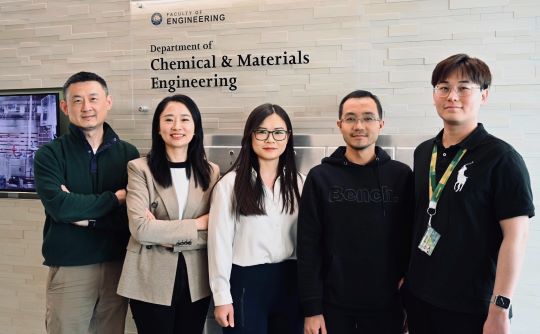A research team from the University of Alberta has discovered a groundbreaking material for high-temperature coatings, which shows great potential for applications such as hydrogen combustion engines.
This innovative coating is derived from a newly formulated superalloy consisting of metals like aluminum and nickel. Known as a complex concentrated alloy, this material is particularly suited for high-temperature applications.
It is designed to coat surfaces that must endure extreme heat, such as those found in gas turbines, power stations, and the engines of vehicles and airplanes.
Strong Thermomechanical Properties
The newly developed alloy, referred to as AlCrTiVNi5, boasts exceptional thermomechanical properties. These include high stability, low thermal expansion, fracture tolerance, and an advantageous combination of strength and ductility. These characteristics make it ideal for use in environments that experience both high heat and high pressure.
The study detailing this discovery, titled “A novel entropy-stabilized oxide coating thermally grown from a valve metal-based complex concentrated alloy,” has been published in Materials Today.
According to Jing Liu, the project supervisor and assistant professor in the Department of Chemical and Materials Engineering, this new coating material outperforms existing commercially available alloys used for high-temperature applications. It is especially promising for use in hydrogen engines.
Challenges of Hydrogen Adoption
Hydrogen is lauded as one of the cleanest energy sources because it only produces water when burned or used in a fuel cell. It is a key component of Canada and Alberta's goals to reduce emissions, with applications ranging from transportation to home heating and heavy industry.
However, the adoption of hydrogen is challenged by the high temperatures at which it burns, which can range from 600°C to 1500°C. These extreme temperatures necessitate mechanical components that can withstand both high heat and corrosion from steam.
“If you want to use a 100% hydrogen fuel combustion engine, the flame temperature is extremely high,” Liu explains. “Until now, none of the existing metallic coatings have been able to work in a 100% hydrogen combustion engine.”
Most hydrogen combustion engines currently used in commercial applications run on a mix of fuels—such as natural gas and hydrogen or diesel and hydrogen. As more industries move towards using hydrogen as a primary fuel source, Liu emphasizes the need to prepare for the ultra-high temperature conditions of a fully hydrogen-fueled engine.
“As we move toward a 100% hydrogen combustion engine, we want to know which alloys can withstand the conditions,” she says. “None of the existing ones did, but we learned valuable insights from these failures.”
Alloy Strengths and Weaknesses
The research team analyzed the strengths and weaknesses of each existing commercially available alloy. They then used theoretical simulations to identify new combinations that could offer the necessary strength and durability.
Collaborating with colleagues like Hao Zhang in the Faculty of Engineering, the team employed computer modeling to understand the properties of each potential new alloy.
“We understand how things react when they heat up,” explains Zhang. “So, we use these simulations and calculations to understand how the interface between the matter and the environment changes if we change the composition.”

Upon identifying AlCrTiVNi5, the team subjected the new alloy to the same rigorous high-temperature tests as existing commercially available alloys. All existing alloys failed within 24 hours or less in the harsh, corrosive environment. In contrast, the new complex concentrated alloy successfully endured these conditions.
“We conducted our experiment in these corrosive environments for up to 100 hours at 900 °C (1652 °F), and it survived, so that’s a significant improvement,” Zhang notes.
Further Studies Necessary
Although this new alloy shows great promise for withstanding the heat of a high-percentage hydrogen combustion engine, Liu acknowledges that further studies are necessary before it can be widely adopted.
Nevertheless, she remains optimistic about its potential.
“This alloy outperforms anything else on the market right now,” Liu says. “It opens the door for new possibilities and will hopefully advance the Canadian hydrogen economy.”
Source: University of Alberta, www.ualberta.ca.
Editor’s note: This article first appeared in the September 2024 print issue of Materials Performance (MP) Magazine. Reprinted with permission.